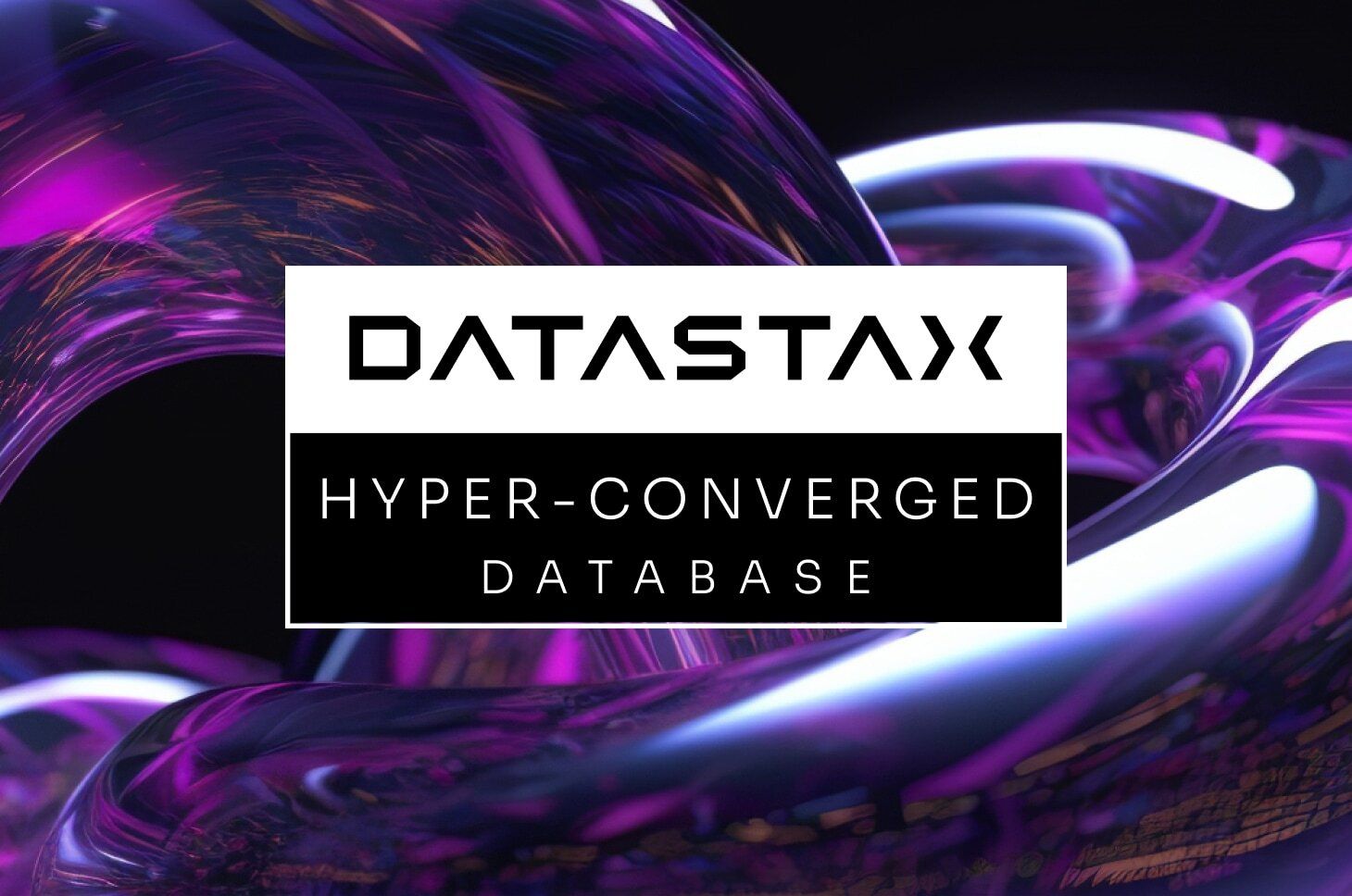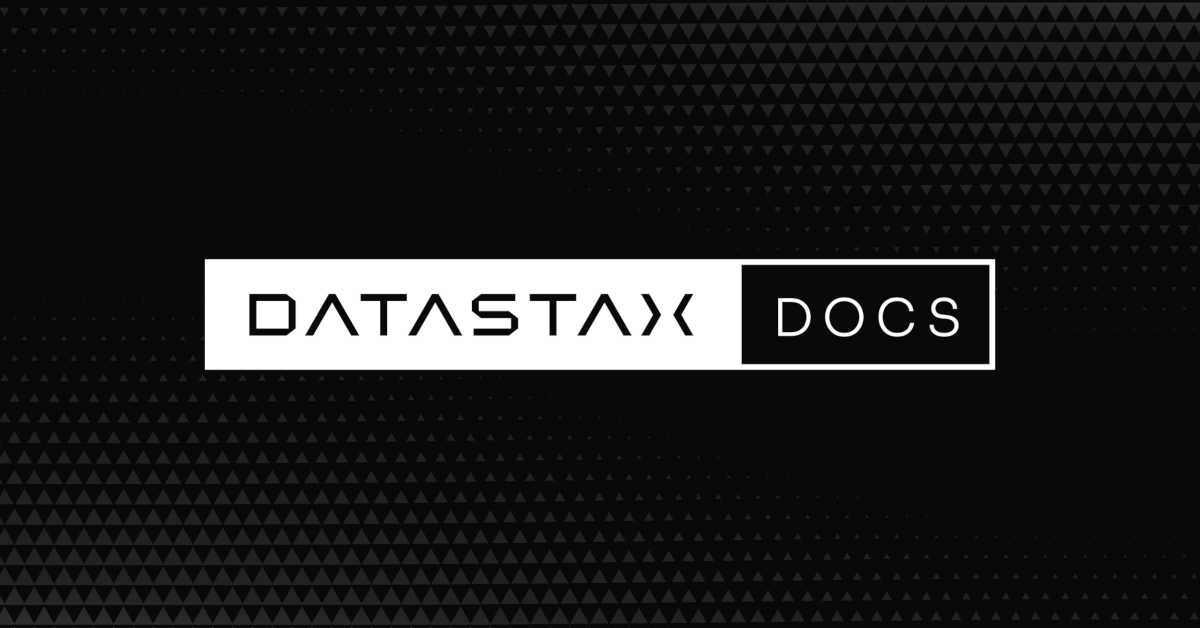Apache Cassandra is a distributed key-value store intended to run in a data center and also across multiple data centers. Initially it was designed as Facebook as an infrastructure for their messaging platform. Later it is open sourced, and today it’s one of the most active Apache projects.
If you are using eBay, Twitter, Spotify or Netflix you are consuming data provided by Cassandra. For example, Netflix uses Cassandra to keep track of your current place in a streaming video, as well as movie ratings, bookmarks and user history of 90+ million users.
Amazing to see how much of this technology we consume in our day-to-day life. The feature that allowed me and my wife to start watching Stranger Things on our long trip on a tablet and continued on TV was depending on Cassandra. To give you an idea of its size, according to a recent presentation, Cassandra serving Netflix has 250+ Clusters, 10,000+ Nodes and 3+ PB of data.
In summary, Cassandra solves the problem of mapping the key-value pair to a server/node, in our case to a container. This mapping is called as the partitioner. There are two common placement strategies used by Cassandra: SimpleStrategy or NetworkTopologyStrategy. SimpleStrategy uses partitioner Murmur3Partitioner by default. Both Murmur3Partitioner and RandomPartitioner partitioners uniformly distribute data to nodes across the cluster. Read and write requests to the cluster are evenly distributed while using these partitioners. Load balancing is simplified as each part of the hash range receives an equal number of rows on average. Byte-Order Partitioner is not recommended other than key range queries.
For development work, the SimpleStrategy class is acceptable. For production work, the NetworkTopologyStrategy class must be set. In production, you will end up with multiple rings using mostly NetworkTopology placement which is by-itself extremely complex to plan.
If you want to learn the architecture of Cassandra, the University of Illinois has a great course on Cloud Computing Concepts and Key-Value Stores which covers internals of Cassandra. You can also find more about custom SeedProvider and Snitches here.
Cassandra doesn’t like shared storage, therefore use of NFS or GlusterFS not recommended for Cassandra rings. It’s also recommended to use SSD or NVMe, since it’s essential to have low latency random reads and good sequential writes at the same time. This kind of requirements can be only satisfied with OpenEBS like local and persistent storage solution.
To achieve the best fault tolerance with Cassandra, you need to have an excellent understanding of the snitch and placement strategies. There is a big debate on whether if Cassandra or the storage should handle the placement of data. My suggestion would be to have a balanced approach and have both. OpenEBS can help you to place your persistent volumes across the datacenter, multiple cloud vendors and fault domains against Cassandra replica failures. First, you can avoid rebalancing your cluster in case of a datacenter failure. Second, in case of node failures in a rack, you can bring up the same node from a snapshot and minimize the time needed to rebalance.
I will use Cassandra custom Kubernetes SeedProvider that allows discovery within Kubernetes clusters as they join the cluster and deploy using gcr.io/google-samples/cassandra:v11 image from Google’s container registry.
Let’s deploy our first three replica Cassandra cluster on our existing AWS K8s cluster with OpenEBS. If you are using on local minikube or datacenter, you can keep the default SimpleStrategy and Murmur3Partitioner in cassandra.yaml file.
Prerequisites
Software
- Docker installed
- Kubernetes 1.8.3+ RBAC enabled cluster
- kubectl installed
- OpenEBS installed
- Cassandra 3.x
Cloud Provider
- Amazon Web Services (AWS) account
Deploy Cassandra Stateful with Persistent Storage in one Region
Once you have OpenEBS storage classes created on your K8s cluster, you can use the following steps to launch a Cassandra service with any number of nodes you like.
By using environment variables, you can change values that are inserted into cassandra.yaml. Default endpoint_snitch is set to SimpleSnitch. I will change the Snitch to Ec2Snitch and also increase the replicas from 3 to 4 later.
Before getting started, check the status of the cluster using the following command.
kubectl get nodes
On my setup, I have one master and four worker nodes on AWS in the same US West (Oregon) region and availability zone (us-west-2a).
ubuntu@ip-172–23–1–236:~$ kubectl get nodes
NAME STATUS ROLES AGE VERSION
ip-172–23–1–225.us-west-2.compute.internal Ready <none> 21h v1.8.3
ip-172–23–1–236.us-west-2.compute.internal Ready master 21h v1.8.3
ip-172–23–1–32.us-west-2.compute.internal Ready <none> 21h v1.8.3
ip-172–23–1–35.us-west-2.compute.internal Ready <none> 21h v1.8.3
ip-172–23–1–46.us-west-2.compute.internal Ready <none> 21h v1.8.3
Download openebs github repo to your host, where sample yaml files are stored.
git clone https://github.com/openebs/openebs.git
First list predefined OpenEBS storage classes available to you.
ubuntu@ip-172–23–1–236:~/openebs/k8s/demo/cassandra$ kubectl get storageclasses
NAME PROVISIONER
default kubernetes.io/aws-ebs
etcd-backup-gce-pd kubernetes.io/gce-pd
gp2 (default) kubernetes.io/aws-ebs
openebs-cassandra openebs.io/provisioner-iscsi
openebs-es-data-sc openebs.io/provisioner-iscsi
openebs-jupyter openebs.io/provisioner-iscsi
openebs-kafka openebs.io/provisioner-iscsi
openebs-mongodb openebs.io/provisioner-iscsi
openebs-percona openebs.io/provisioner-iscsi
openebs-redis openebs.io/provisioner-iscsi
openebs-standalone openebs.io/provisioner-iscsi
openebs-standard openebs.io/provisioner-iscsi
openebs-zk openebs.io/provisioner-iscsi
Go to openebs/k8s/demo/cassandra/ folder and edit cassandra-statefulset.yaml file.
vi cassandra-statefulset.yaml
This file should look like below. You can edit and specify number of replicas preferred and your own OpenEBS storage class before applying.
apiVersion: apps/v1beta1
kind: StatefulSet
metadata:
name: cassandra
labels:
app: cassandra
spec:
serviceName: cassandra
replicas: 3
selector:
matchLabels:
app: cassandra
template:
metadata:
labels:
app: cassandra
spec:
containers:
— name: cassandra
image: gcr.io/google-samples/cassandra:v11
imagePullPolicy: Always
ports:
— containerPort: 7000
name: intra-node
— containerPort: 7001
name: tls-intra-node
— containerPort: 7199
name: jmx
— containerPort: 9042
name: cql
resources:
limits:
cpu: “500m”
memory: 1Gi
requests:
cpu: “500m”
memory: 1Gi
securityContext:
capabilities:
add:
— IPC_LOCK
lifecycle:
preStop:
exec:
command: [“/bin/sh”, “-c”, “PID=$(pidof java) && kill $PID && while ps -p $PID > /dev/null; do sleep 1; done”]
env:
— name: MAX_HEAP_SIZE
value: 512M
— name: HEAP_NEWSIZE
value: 100M
— name: CASSANDRA_SEEDS
value: “cassandra-0.cassandra.default.svc.cluster.local”
— name: CASSANDRA_CLUSTER_NAME
value: “K8Demo”
— name: CASSANDRA_DC
value: “DC1-K8Demo”
— name: CASSANDRA_RACK
value: “Rack1-K8Demo”
— name: CASSANDRA_AUTO_BOOTSTRAP
value: “false”
— name: POD_IP
valueFrom:
fieldRef:
fieldPath: status.podIP
readinessProbe:
exec:
command:
— /bin/bash
— -c
— /ready-probe.sh
initialDelaySeconds: 15
timeoutSeconds: 5
# These volume mounts are persistent. They are like inline claims,
# but not exactly because the names need to match exactly one of
# the stateful pod volumes.
volumeMounts:
— name: cassandra-data
mountPath: /cassandra_data
volumeClaimTemplates:
— metadata:
name: cassandra-data
annotations:
volume.beta.kubernetes.io/storage-class: openebs-cassandra
spec:
accessModes: [ “ReadWriteOnce” ]
resources:
requests:
storage: 5G
Note: There are few parameters you may want to modify.
apiVersion: apps/v1beta2 API group and version is introduced 1.8 release.
replicas: 3, i’m starting with 3 replicas and will increase later.
image: gcr.io/google-samples/cassandra:v12 is the latest image available at the time I’ve tested.
volume.beta.kubernetes.io/storage-class: openebs-cassandra i’m using a predefined OpenEBS storage class. You can modify it separately.
Create a Cassandra Headless Service
To be able to have a simple discovery of the Cassandra seed node we need to create a “headless” service. If you view the cassandra-service.yamlfile, you will notice that clusterIP is set to None. This will allows us to use KubeDNS for the Pods to discover the IP address of the Cassandra seed.
ubuntu@ip-172–23–1–236:~/openebs/k8s/demo/cassandra$ cat cassandra-service.yaml
apiVersion: v1
kind: Service
metadata:
labels:
app: cassandra
name: cassandra
spec:
clusterIP: None
ports:
— port: 9042
selector:
app: cassandra
Now apply cassandra-service.yaml file to create headless service.
ubuntu@ip-172–23–1–236:~/openebs/k8s/demo/cassandra$ kubectl apply -f cassandra-service.yaml
service “cassandra” created
Create a Cassandra StatefulSet
Most applications deployed on Kubernetes should be cloud-native and rely on external resources for their data and state. However, stateful application and databases like Cassandra require stateful sets and persistent volumes to ensure resiliency. In this case, OpenEBS will provide us our persistent volume.
The StatefulSet is responsible for creating the Pods. Run the following command to start our Cassandra replicas.
ubuntu@ip-172–23–1–236:~/openebs/k8s/demo/cassandra$ kubectl apply -f cassandra-statefulset.yaml
statefulset “cassandra” created
Validate the StatefulSet
Check if your StatefulSet has deployed using the command below. Time may take around 4–5 minutes to complete.
ubuntu@ip-172–23–1–236:~/openebs/k8s/demo/cassandra$ kubectl get statefulsets
NAME DESIRED CURRENT AGE
cassandra 3 3 5m
If you don’t see all 3 replicas ready, you can check status of pods to watch progress. For example, i ran kubectl get pods after 2 minutes below. First node was ready and second was still creating. All three pods were ready after around 5 minutes.
ubuntu@ip-172–23–1–236:~/openebs/k8s/demo/cassandra$ kubectl get pods
NAME READY STATUS RESTARTS AGE
cassandra-0 1/1 Running 0 2m
cassandra-1 0/1 ContainerCreating 0 12s
maya-apiserver-5994b58bbb-ss7mr 1/1 Running 0 13m
openebs-provisioner-6f45dcf459-hqldl 1/1 Running 0 13m
pvc-13a2ebce-d226–11e7–955b-062af127ae24-ctrl-9c7dcdcfc-bgmrp 1/1 Running 0 12s
pvc-13a2ebce-d226–11e7–955b-062af127ae24-rep-78bf89ff99–572j8 0/1 ContainerCreating 0 12s
pvc-13a2ebce-d226–11e7–955b-062af127ae24-rep-78bf89ff99–66qtf 1/1 Running 0 12s
pvc-d13bf437-d225–11e7–955b-062af127ae24-ctrl-584956b667-n88mv 1/1 Running 0 2m
pvc-d13bf437-d225–11e7–955b-062af127ae24-rep-74d4cf4b84–5m8nz 1/1 Running 0 2m
pvc-d13bf437-d225–11e7–955b-062af127ae24-rep-74d4cf4b84-c4t9c 1/1 Running 0
Verify that all the OpenEBS persistent volumes are created, the Cassandra headless service and replicas are running.
ubuntu@ip-172–23–1–236:~/openebs/k8s/demo/cassandra$ kubectl get pods -o wide
NAME READY STATUS RESTARTS AGE IP NODE
cassandra-0 1/1 Running 0 6m 10.2.2.4 ip-172–23–1–32.us-west-2.compute.internal
cassandra-1 1/1 Running 0 4m 10.2.4.6 ip-172–23–1–46.us-west-2.compute.internal
cassandra-2 1/1 Running 0 2m 10.2.1.6 ip-172–23–1–35.us-west-2.compute.internal
maya-apiserver-5994b58bbb-ss7mr 1/1 Running 0 17m 10.2.4.3 ip-172–23–1–46.us-west-2.compute.internal
openebs-provisioner-6f45dcf459-hqldl 1/1 Running 0 17m 10.2.3.2 ip-172–23–1–225.us-west-2.compute.internal
pvc-13a2ebce-d226–11e7–955b-062af127ae24-ctrl-9c7dcdcfc-bgmrp 1/1 Running 0 4m 10.2.3.4 ip-172–23–1–225.us-west-2.compute.internal
pvc-13a2ebce-d226–11e7–955b-062af127ae24-rep-78bf89ff99–572j8 1/1 Running 0 4m 10.2.4.5 ip-172–23–1–46.us-west-2.compute.internal
pvc-13a2ebce-d226–11e7–955b-062af127ae24-rep-78bf89ff99–66qtf 1/1 Running 0 4m 10.2.3.5 ip-172–23–1–225.us-west-2.compute.internal
pvc-5383da78-d226–11e7–955b-062af127ae24-ctrl-9c4bfcd6–4ss2r 1/1 Running 0 2m 10.2.1.4 ip-172–23–1–35.us-west-2.compute.internal
pvc-5383da78-d226–11e7–955b-062af127ae24-rep-5bbbd9ff45–7tss8 1/1 Running 0 2m 10.2.3.6 ip-172–23–1–225.us-west-2.compute.internal
pvc-5383da78-d226–11e7–955b-062af127ae24-rep-5bbbd9ff45-vfkrn 1/1 Running 0 2m 10.2.1.5 ip-172–23–1–35.us-west-2.compute.internal
pvc-d13bf437-d225–11e7–955b-062af127ae24-ctrl-584956b667-n88mv 1/1 Running 0 6m 10.2.1.3 ip-172–23–1–35.us-west-2.compute.internal
pvc-d13bf437-d225–11e7–955b-062af127ae24-rep-74d4cf4b84–5m8nz 1/1 Running 0 6m 10.2.3.3 ip-172–23–1–225.us-west-2.compute.internal
pvc-d13bf437-d225–11e7–955b-062af127ae24-rep-74d4cf4b84-c4t9c 1/1 Running 0 6m 10.2.4.4 ip-172–23–1–46.us-west-2.compute.internal
On the list of the Pods above, you see 3 Pods running. Your Pod names should be cassandra-0, cassandra-1, cassandra-2 and the next pods would follow the ordinal number (cassandra-3, cassandra-4,..) Use this command to view the Pods created by the StatefulSet:
ubuntu@ip-172–23–1–236:~/openebs/k8s/demo/cassandra$ kubectl get svc
NAME TYPE CLUSTER-IP EXTERNAL-IP PORT(S) AGE
cassandra ClusterIP None <none> 9042/TCP 7m
kubernetes ClusterIP 10.3.0.1 <none> 443/TCP 22h
maya-apiserver-service ClusterIP 10.3.0.204 <none> 5656/TCP 18m
pvc-13a2ebce-d226–11e7–955b-062af127ae24-ctrl-svc ClusterIP 10.3.0.188 <none> 3260/TCP,9501/TCP 5m
pvc-5383da78-d226–11e7–955b-062af127ae24-ctrl-svc ClusterIP 10.3.0.23 <none> 3260/TCP,9501/TCP 3m
pvc-d13bf437-d225–11e7–955b-062af127ae24-ctrl-svc ClusterIP 10.3.0.187 <none> 3260/TCP,9501/TCP 7m
Verifying Successful Cassandra Deployment
Check if the Cassandra nodes are up, perform a nodetool status on cassandra-0 node:
ubuntu@ip-172–23–1–236:~/openebs/k8s/demo/cassandra$ kubectl exec -ti cassandra-0 — nodetool status
Datacenter: DC1-K8Demo
======================
Status=Up/Down
|/ State=Normal/Leaving/Joining/Moving
— Address Load Tokens Owns (effective) Host ID Rack
UN 10.2.4.6 83.17 KiB 32 75.6% 3c93c7b7–61a7–4cf1-a407-cb47b1de0763 Rack1-K8Demo
UN 10.2.1.6 65.65 KiB 32 59.5% 552569fe-c6df-4edb-a553–9efdcf682fb3 Rack1-K8Demo
UN 10.2.2.4 83.12 KiB 32 64.9% 92060271-d8cd-48be-a489-c830a8553462 Rack1-K8Demo
UN means node is up and in normal state. You will also notice that each node has 32 tokens. This is the default value, in production workloads a good default value for this is 256. See more information here.
The Owns column suggests the data distribution percentage for the content placed into the Cassandra keyspaces.
Create a Test Keyspace with Tables
Identify the IP Address of any of the Cassandra replicas, for example, Cassandra-0. This is available from the output of the nodetool status command executed above (10.2.4.6, 10.2.1.6, 10.2.2.4).
Cqlsh is a Python-based utility that enables you to execute Cassandra Query Language (CQL). CQL is a declarative language that allows users to query Cassandra using semantics similar to SQL.
Install the python-minimal and python-pip apt packages and perform a pip install of Csqlsh using the following commands.
sudo apt-get install -y python-minimal python-pip
pip install cqlsh
Login to the CQL shell using the Cqlsh utility using the following command.
ubuntu@ip-172–23–1–236:~/openebs/k8s/demo/cassandra$ cqlsh 10.2.4.6 9042 — cqlversion=”3.4.2"
Connected to K8Demo at 10.2.4.6:9042.
[cqlsh 5.0.1 | Cassandra 3.9 | CQL spec 3.4.2 | Native protocol v4]
Use HELP for help.
cqlsh>
As I mentioned earlier, you have two placement options while creating a keyspace. You can either use SimpleStrategy or NetworkTopologyStrategy.
You can create a keyspace using SimpleStrategy with replication factor 2 by running the following commands.
cqlsh> create keyspace ssks with replication = { ‘class’ : ‘SimpleStrategy’ , ‘replication_factor’ : 2 };I will create a keyspace using NetworkTopologyStrategy by running the following commands.
cqlsh> create keyspace ntsks with replication = { ‘class’ : NetworkTopologyStrategy’, ‘DC1-K8Demo’ : 1 };cqlsh> describe keyspaces;
ntsks system_schema system_auth system system_distributed system_traces
To use NetworkTopologyStrategy with data centers in a production environment, you need to change the default snitch, SimpleSnitch to a network-aware Ec2Snitch. You need to define one or more data center names in the snitch properties file, and use those data center names to define the keyspace; otherwise, Cassandra will fail to find a node. You can find the instructions to change the default Snitch here.
Create a table with test content and view the data using the following commands.
cqlsh> use ntsks;
cqlsh:ntsks> create table inventory (id uuid,Username text,Email text,Age int,PRIMARY KEY ((id), Username));
cqlsh:ntsks> insert into inventory (id, Username, Email, Age) values (1234b130-ae79–11e4-ab27–0700500c9a24, ‘Murat’, ‘murat@cloudbyte.com’, 40);
cqlsh:ntsks> select * from inventory;
id | username | age | email
— — — — — — — — — — — — — — — — — — — + — — — — — + — — -+ — — — — — — — — — — -
1234b130-ae79–11e4-ab27–0700500c9a24 | Murat | 37 | murat@cloudbyte.com
(1 rows)
Flush the data to ensure it is written to a disk from the memtable (memory) using the following command.
kubectl exec cassandra-0 — nodetool flush ntsks
Delete the Test Keyspace
Verify the masterless nature of Cassandra StatefulSet by deleting the keyspace from another replica, in this example, Cassandra-1.
ubuntu@ip-172–23–1–236:~/openebs/k8s/demo/cassandra$ cqlsh 10.2.1.6 9042 — cqlversion=”3.4.2"
Connected to K8Demo at 10.2.1.6:9042.
[cqlsh 5.0.1 | Cassandra 3.9 | CQL spec 3.4.2 | Native protocol v4]
Use HELP for help.
cqlsh> use ntsks;
cqlsh:ssks> select * from Inventory;
id | username | age | email
— — — — — — — — — — — — — — — — — — — + — — — — — + — — -+ — — — — — — — — — — -
1234b130-ae79–11e4-ab27–0700500c9a24 | Murat | 37 | murat@cloudbyte.com
(1 rows)
cqlsh> drop keyspace ntsks;
Verify that the keyspace is deleted successfully using the following command.
cqlsh> describe keyspaces
system_traces system_schema system_auth system system_distributed
Scale the StatefulSet
To increase or decrease the size of your StatefulSet you can use the scale command:
ubuntu@ip-172–23–1–236:~/openebs/k8s/demo/cassandra$ kubectl scale — replicas=4 statefulset/cassandra
statefulset “cassandra” scaled
Wait a minute or two and check if it worked:
$ kubectl get statefulsets
NAME DESIRED CURRENT AGE
cassandra 4 4 1h
If you watch the Cassandra pods deploy, they should be created sequentially.
You can view the list of the Pods again to confirm that your Pods are up and running.
ubuntu@ip-172–23–1–236:~/openebs/k8s/demo/cassandra$ kubectl get statefulsets
NAME DESIRED CURRENT AGE
cassandra 4 4 1h
ubuntu@ip-172–23–1–236:~/openebs/k8s/demo/cassandra$ kubectl get pods -o wide
NAME READY STATUS RESTARTS AGE IP NODE
cassandra-0 1/1 Running 0 1h 10.2.2.4 ip-172–23–1–32.us-west-2.compute.internal
cassandra-1 1/1 Running 0 1h 10.2.4.6 ip-172–23–1–46.us-west-2.compute.internal
cassandra-2 1/1 Running 0 1h 10.2.1.6 ip-172–23–1–35.us-west-2.compute.internal
cassandra-3 0/1 Running 0 1m 10.2.3.9 ip-172–23–1–225.us-west-2.compute.internal
maya-apiserver-5994b58bbb-ss7mr 1/1 Running 0 1h 10.2.4.3 ip-172–23–1–46.us-west-2.compute.internal
openebs-provisioner-6f45dcf459-hqldl 1/1 Running 0 1h 10.2.3.2 ip-172–23–1–225.us-west-2.compute.internal
pvc-13a2ebce-d226–11e7–955b-062af127ae24-ctrl-9c7dcdcfc-bgmrp 1/1 Running 0 1h 10.2.3.4 ip-172–23–1–225.us-west-2.compute.internal
pvc-13a2ebce-d226–11e7–955b-062af127ae24-rep-78bf89ff99–572j8 1/1 Running 0 1h 10.2.4.5 ip-172–23–1–46.us-west-2.compute.internal
pvc-13a2ebce-d226–11e7–955b-062af127ae24-rep-78bf89ff99–66qtf 1/1 Running 0 1h 10.2.3.5 ip-172–23–1–225.us-west-2.compute.internal
pvc-5383da78-d226–11e7–955b-062af127ae24-ctrl-9c4bfcd6–4ss2r 1/1 Running 0 1h 10.2.1.4 ip-172–23–1–35.us-west-2.compute.internal
pvc-5383da78-d226–11e7–955b-062af127ae24-rep-5bbbd9ff45–7tss8 1/1 Running 0 1h 10.2.3.6 ip-172–23–1–225.us-west-2.compute.internal
pvc-5383da78-d226–11e7–955b-062af127ae24-rep-5bbbd9ff45-vfkrn 1/1 Running 0 1h 10.2.1.5 ip-172–23–1–35.us-west-2.compute.internal
pvc-5c9e5136-d22f-11e7–955b-062af127ae24-ctrl-5b6d99869–7gxv5 1/1 Running 0 1m 10.2.3.7 ip-172–23–1–225.us-west-2.compute.internal
pvc-5c9e5136-d22f-11e7–955b-062af127ae24-rep-5fc8b95cd-6vfbt 1/1 Running 0 1m 10.2.2.5 ip-172–23–1–32.us-west-2.compute.internal
pvc-5c9e5136-d22f-11e7–955b-062af127ae24-rep-5fc8b95cd-h22qz 1/1 Running 0 1m 10.2.3.8 ip-172–23–1–225.us-west-2.compute.internal
pvc-d13bf437-d225–11e7–955b-062af127ae24-ctrl-584956b667-n88mv 1/1 Running 0 1h 10.2.1.3 ip-172–23–1–35.us-west-2.compute.internal
pvc-d13bf437-d225–11e7–955b-062af127ae24-rep-74d4cf4b84–5m8nz 1/1 Running 0 1h 10.2.3.3 ip-172–23–1–225.us-west-2.compute.internal
pvc-d13bf437-d225–11e7–955b-062af127ae24-rep-74d4cf4b84-c4t9c 1/1 Running 0 1h 10.2.4.4 ip-172–23–1–46.us-west-2.compute.internal
You can perform a nodetool status to check if the other Cassandra nodes have joined and formed a Cassandra cluster.
$ kubectl exec -ti cassandra-0 — nodetool status
Datacenter: DC1-K8Demo
======================
Status=Up/Down
|/ State=Normal/Leaving/Joining/Moving
— Address Load Tokens Owns (effective) Host ID Rack
UN 10.2.4.6 174.97 KiB 32 59.7% 3c93c7b7–61a7–4cf1-a407-cb47b1de0763 Rack1-K8Demo
UN 10.2.1.6 182.32 KiB 32 43.8% 552569fe-c6df-4edb-a553–9efdcf682fb3 Rack1-K8Demo
UN 10.2.2.4 169.7 KiB 32 42.5% 92060271-d8cd-48be-a489-c830a8553462 Rack1-K8Demo
UN 10.2.3.9 90.81 KiB 32 54.1% 47e8c9e2-a6d9–4276–88ae-6fe2256ca2af Rack1-K8Demo
You will need to wait for the status of the nodes to be Up and Normal (UN) to execute the commands in the next steps.
Troubleshooting
If your Cassandra instance is not running properly, you may check the logs using the command below. Replace <your-pod-name> with your pod name. For example, cassandra-0:
kubectl logs <your-pod-name>
If your Cassandra nodes are not joining, delete your controller/statefulset then delete your Cassandra service:
kubectl delete statefulset cassandra
if you created the Cassandra StatefulSet:
kubectl delete svc cassandra
To delete everything:
kubectl delete statefulset,pvc,pv,svc -l app=cassandra
Originally published at Containerized Me.







